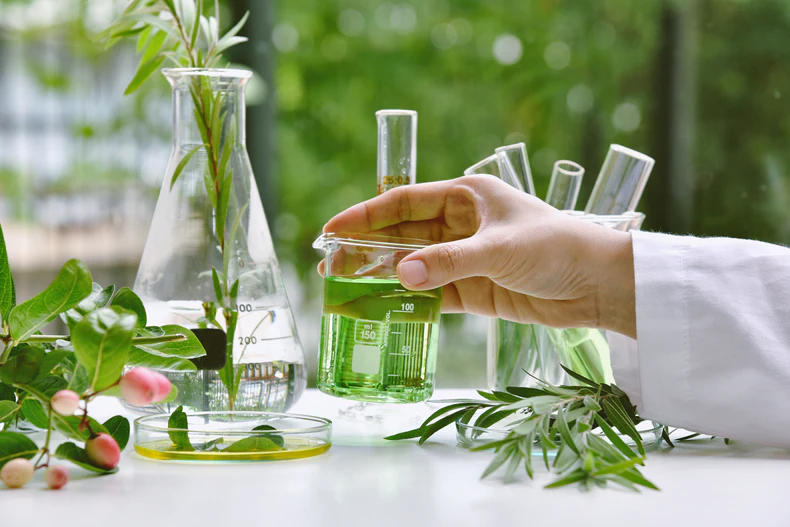Market Size
Market size for personal care ingredients was estimated to be $10.4 billion globally in 2021 and is anticipated to increase to $18.5 billion by 2031, with a CAGR of 6.0% from 2022 to 2031.
“The need for personal care chemicals decreased during the COVID-19 pandemic in 2020 as consumer spending on different personal care products, including perfumes and hair care products, decreased. Because to the COVID-19 pandemic’s increased health awareness among customers worldwide, more people are choosing natural and chemical-free products. As a result, during the course of the projection period, the demand for natural personal care products is anticipated to grow quickly.”
The raw materials used to manufacture skin care products all around the world are personal care ingredients. These ingredients can function in skin care products as anti-fungal, anti-aging, epidermis, and other substances. Moreover, they can be divided into active and inactive components. Inactive components include surfactants, preservatives, colourants, and polymer materials while active ingredients include anti-ageing agents, exfoliants, conditioning agents, and UV protection agents.
The increase in consumer spending power brought about by rising disposable incomes and changes in living standards is anticipated to fuel the personal care ingredients market’s expansion from 2021 to 2031. The market is expanding as a result of rising consumer awareness of products with multiple uses. Yet over the anticipated period, the growth of the personal care ingredients market will be constrained by the negative impacts of chemical-based personal care products and strict government regulations. Although possibilities in the worldwide personal care ingredients market are anticipated to arise throughout the studied timeframe as a result of developments in skin care products, a growth in health awareness, and a rise in demand for personal care goods.
Based on the source, components type, application, and geography, the market for personal care ingredients is divided into submarkets. The market is divided into natural substances and synthetic ingredients according to the source. The market is divided into categories for skin care, hair care, toiletries, makeup, perfumes, and oral care based on application. Men, babies, sun protection, hand/body lotion, and face therapy are further sub-segments of the skin care market.
Rheology control agents, emollients, UV absorbers, surfactants, emulsifiers, antimicrobials, hair fixative polymers, and conditioning polymers are some of the several categories of substances used in personal care products. Hydrated silica, carboxymethyl cellulose, hydroxyethyl cellulose, organoclays, and others are further classified under the rheology control agents segment. Emollients esters, glycerin, and others make up the emollients category. The avobenzone, octyl methoxycinnamate, bemotrizinol, and other segments of the UV absorbers industry. Betaines, fatty alcohol ethoxylates, and other substances make up the surfactants segment’s additional sub-segments. Lecithin, glyceryl stearates, polysorbates, and other substances are classified as emulsifiers. The antimicrobials market is further subdivided into parabens, citric acid, phenoxyethanol, and other substances. The polyvinylpyrrolidone, acrylate, silicone, and other subsegments of the hair fixative polymers segment are further divided into the segment. Cyclomethicone, polyquaterniums, hydrolyzates, and other materials are divided up into the conditioning polymers sector. The personal care ingredients market is examined in each of the following regions: North America, Europe, Asia-Pacific, and LAMEA.
The analysis of the global market for personal care ingredients includes comprehensive data on the key players in the sector. Ashland Global Holdings Inc., BASF SE, Berkshire Hathaway Inc. (The Lubrizol Corporation), Clariant AG, Croda International Plc, DOW, Inc., Evonik Industries AG, J.M. Huber Corporation, KCC Corporation (Momentive Performance Materials), and Solvay S.A. are a few of the major companies operating and profiled in the report. Wacker Chemie AG, Akzo Nobel N.V., Huntsman International, Cargill, Inc., Lonza Group, and other businesses are included among those operating in the personal care ingredients market.
Global Personal Care Ingredient Market, by Source
Based on source, which covers both natural and synthetic components, the global market for personal care ingredients has been examined. Due to rising demand for skin care and other personal care products from developing economies as well as rising consumer spending power, the synthetic ingredients sector maintained the greatest personal care ingredients market share of 66.5% in 2021.
Global Personal Care Ingredient Market, by Ingredients Type
The UV absorbers segment held the largest market share of approximately 26.1% in 2021 when ingredients were categorised by type. This dominance is anticipated to hold true throughout the forecast period. The expanding middle-aged and elderly population as well as shifting beauty trends are to blame for the increase in demand for anti-aging formulas.
Global Personal Care Ingredient Market, by Application
According to application, the skin care industry accounted for about 34.7% of the global market for personal care ingredients in 2021. This is due to a growth in demand from people around the world for skin care goods like sunscreen, body lotions, facial creams, and others. Also, the production of skin care products using novel compounds like polyhydroxy acids and plant-based retinol substitutes like Bakuchiol has sparked a new market trend for personal care ingredients.
Personal care ingredient market, by region
With around 32.8% of the global market share for personal care ingredients, a developed area like North America dominated the market by geography. This trend is anticipated to continue during the forecast period. This is due to the region’s large consumer base and rising use of skin care and other personal care goods.
Impact Of Covid-19 On The Personal Care Ingredient Market
- About 213 nations have been affected by COVID-19, which the World Health Organization declared a global health emergency on March 11, 2020. Due to COVID-19 epidemic, transit constraints were established, which led in lower industrial production and disrupted supply networks. Hence, having a significant negative impact on the growth of the global economy and the market for personal care ingredients. Due to the work stoppage, businesses were not making any money, and in addition to losing money, they also lost their suppliers who were supplying the necessary materials to various businesses for use in the construction industry. These suppliers all suffered large losses.
- Due to the global lockdown that was undertaken to stop the coronavirus from spreading, the COVID-19 pandemic has had an unequal influence on the market for personal care chemicals. The business, production, distribution, and beauty salons were consequently stopped. Hence, there is decline in demand for cosmetic items from the beauty stores, institutes, salons, and others, which in turn resulted in the slow growth in the 2020.
- During the pandemic, demand for sun care, hair style, and colour cosmetics substantially decreased. Due to the worldwide lockdowns and limitations put in place by governments, people were compelled to work from home and refrain from engaging in leisure activities, which resulted in a decrease in the demand for these products. As a result, demand for UV-protection chemicals, hair fixative polymers, and cosmetics compounds fell precipitously in 2020. The demand for personal care and cosmetic products (such as sanitizers, soap, disinfectants, and others) is also rising, as are sales of other house cleaning products. As a result, COVID-19 has less of an effect on the market for personal care ingredients.
- The American Chemical Council (ACC) reports that in the United States, volume gains were seen in the flavour and fragrance and cosmetic additives segments, whereas the other specialty chemicals segment had volume losses during the epidemic. Yet, the market for ingredients for personal care products may have changed in other economies around the world.
- The opening of various industries, manufacturing facilities, offices, and retail establishments in 2021 led to an increase in demand for personal care ingredients all around the world. The chemical industry started up again in 2021, which helped close the supply and demand gap for the raw materials needed to make personal care products.



